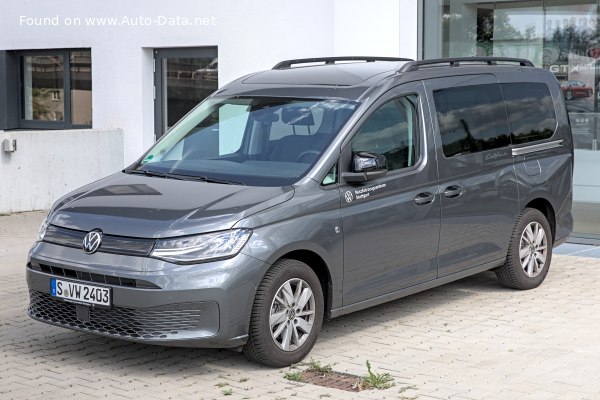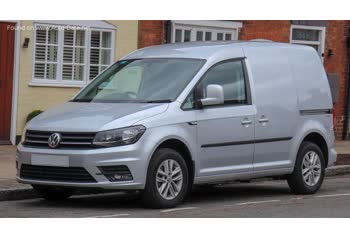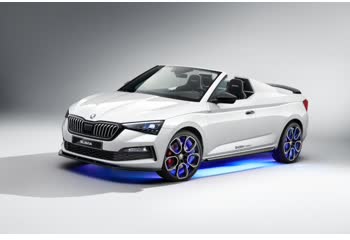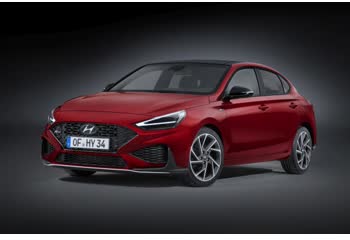Everything you need to know about specifications and performance - Volkswagen Caddy 2020 - 1.5 TSI (114 Hp) DSG

Overview:
What is the engine capacity of a Volkswagen Caddy 2020?
The engine capacity of the Volkswagen Caddy 2020 is 1498 cm.
Volkswagen Caddy 2020 How many horsepower?
The engine power of the Volkswagen Caddy 2020 is 114 Hp @ 4500-6000 rpm..
What is the Volkswagen Caddy 2020 engine?
Volkswagen Caddy 2020 engine is EA211 evo / DPBC. (Click to see other cars using the same engine)
How much gasoline does a Volkswagen Caddy 2020 consume?
The Volkswagen Caddy 2020 consumes 5.8 liters of gasoline per 100 km
General:
Brand: Volkswagen
Model: Caddy
Generation: Caddy Maxi V
Modification (Engine): 1.5 TSI (114 Hp) DSG
Start of production: 2020
End of production:
Powertrain Architecture: Internal Combustion Engine
Body type: Mini van
Seats: 5-7
Doors: 4-5
Engine:
Engine systems: Start & Stop System
Power: 114 hp @ 4500-6000 rpm.
Power per litre: 76.1 hp/l
Torque: 220 nm @ 1750-3000 rpm.
Engine Model/Code: EA211 EVO / DPBC
Engine displacement: 1498 cm
Number of cylinders: 4
Engine configuration: Inline
Number of valves per cylinder: 4
Fuel injection system: Direct injection
Engine aspiration: Turbocharger, Intercooler
Valvetrain: DOHC
Engine oil capacity: 4.3 l
Engine layout: Front, Transverse
Cylinder Bore: 74.5 mm
Piston Stroke: 85.9 mm
Compression ratio: 12.5
Performance:
Fuel Type: Petrol (Gasoline)
Fuel consumption (economy) - urban: 6.7-6.9 l/100 km
Fuel consumption (economy) - extra urban: 5.3 l/100 km
Combined fuel consumption (WLTP): 6.6-7.2 l/100 km
Fuel consumption at Low speed (WLTP): 8.7-9 l/100 km
Fuel consumption at Medium speed (WLTP): 6.6-7.1 l/100 km
Fuel consumption at high speed (WLTP): 5.6-6 l/100 km
Fuel consumption at very high speed (WLTP): 6.8-7.5 l/100 km
Fuel consumption (economy) - urban (NEDC, WLTP equivalent): 6.7-6.9 l/100 km
Fuel consumption (economy) - extra urban (NEDC, WLTP equivalent): 5.3 l/100 km
Fuel consumption (economy) - combined (NEDC, WLTP equivalent): 5.8 l/100 km
Fuel consumption (economy) - combined: 5.8 l/100 km
Emission standard: Euro 6d-ISC-Fcm
Acceleration 0 - 100 km/h: 12.4 sec
Acceleration 0 - 62 mph: 12.4 sec
Maximum speed: 181 km/h
Weight-to-power ratio: 14.6 kg/Hp, 68.6 Hp/tonne
Weight-to-torque ratio: 7.6 kg/Nm, 132.5 Nm/tonne
Acceleration 0 - 60 mph: 11.8 sec
Space:
Kerb Weight: 1661-1686 kg
Max. weight: 2350 kg
Max. roof load: 100 kg
Max load: 664-689 kg
Trunk (boot) space - maximum: 3105 l
Trunk (boot) space - minimum: 446 l
Permitted trailer load with brakes (12%): 1400 kg
Fuel tank capacity: 50 l
Permitted trailer load without brakes: 750 kg
Permitted towbar download: 75 kg
dimensions:
Ramp-over (brakeover) angle: 11.8°
Length: 4853 mm
Width: 1855 mm
Height: 1836 mm
wheelbase: 2970 mm
Width including mirrors: 2100 mm
Front overhang: 890 mm
Rear overhang: 993 mm
Ride height (ground clearance): 143 mm
Minimum turning circle (turning diameter): 12.1 m
Approach angle: 14.7°
Departure angle: 15.9°
Powertrain, Suspension and Brakes:
Drivetrain Architecture: The Internal combustion Engine (ICE) drives the front wheels of the vehicle.
Drive wheel: Front wheel drive
Number of gears and type of gearbox: 7 gears, automatic transmission DSG
Front brakes: Ventilated discs, 312x25 mm
Rear brakes: Disc, 272x10 mm
Assisting systems: ABS (Anti-lock braking system)
Steering type: Steering rack and pinion
Power steering: Electric Steering
Tires size: 205/60 R16; 215/55 R17
Wheel rims size: 6.5J x 16; 6.5J x 17
Front suspension: Independent, type McPherson with coil Spring and anti-roll bar
Rear suspension: Rigid axle suspension, Trailing arm, Coil Spring
See also

Other generation.
Its production began in 2015 until 2020

Same production year and almost the same engine capacity.
Its production began in 2020 until 2020

Same production year and almost the same engine capacity.
Its production began in 2020 until Now
Write a comment